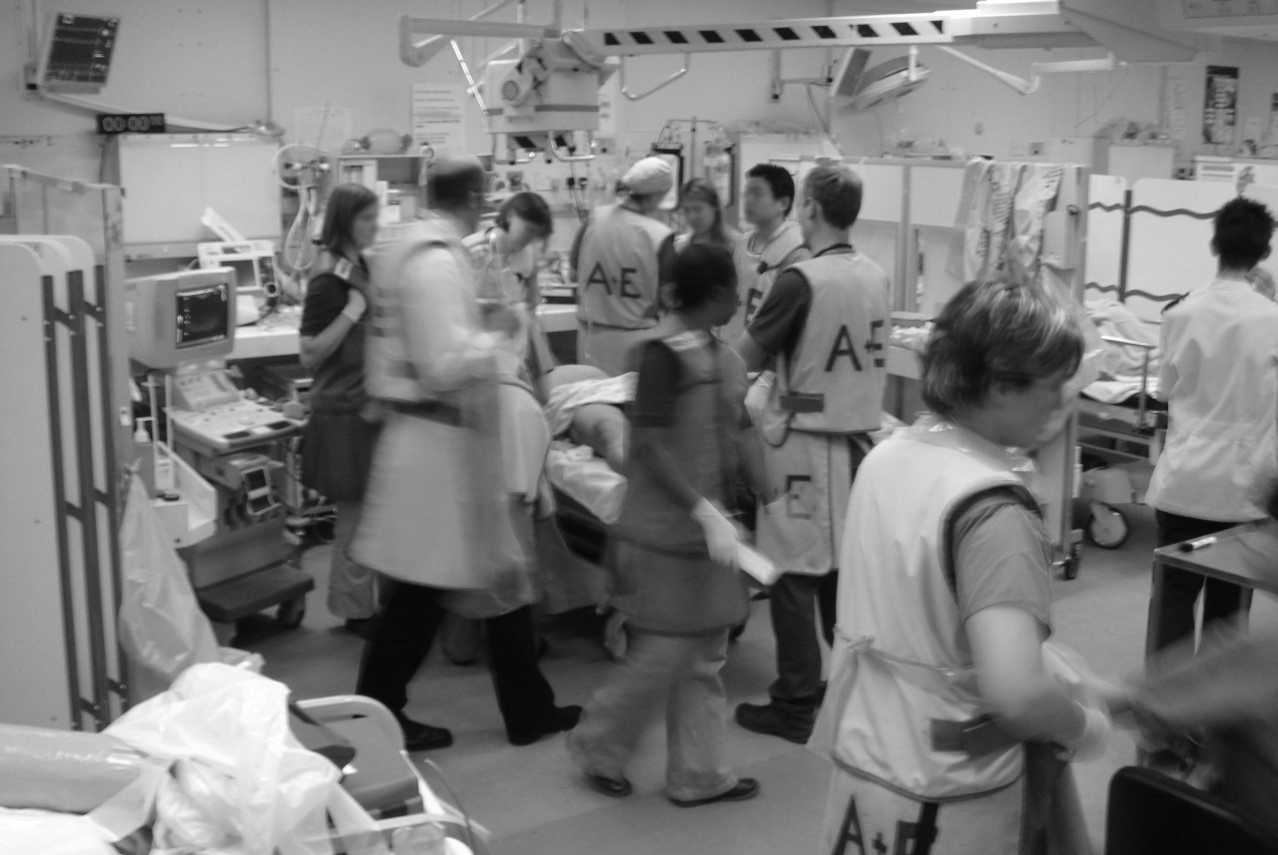Trauma Models
This website presents the prognostic trauma care models that has been developed by the research collaboration between the Machine Intelligence and Decision Systems research group and the Centre for Trauma Sciences in Queen Mary University of London. There are currently two prognostic models in the website:

TIC BN: A prognostic model for predicting trauma induced coagulopathy in early stage of trauma care.
Coagulopathy is a pathophysiological disorder affecting the body’s ability to form a stable blood clot. Up to a quarter of trauma patients develop an trauma induced coagulopathy (TIC) soon after their injury. These patients have a considerably higher risk of bleeding and death since the body’s protective mechanisms to stop bleeding are deranged. Several effective treatment options are available if TIC can be identified early. However, standard laboratory tests to identify TIC take over an hour to produce useable results whereas treatment is most effective if instituted immediately.
The primary aim of the TIC Bayesian Network (BN) is to predict TIC with the earliest available patient information. The TIC BN is able to calculate predictions when some of its input variables are unknown.
VIBN: A prognostic model for tissue viability in patients with lower-extremity arterial trauma.
Injuries to the blood vessels of the lower extremity are potentially devastating and can result in death, severe disability or limb loss. Delays or errors in treatment decisions may lead to irreversible consequences and worsen outcome. One of the most difficult surgical decisions is whether to attempt salvage or perform an amputation of a severely injured extremity. Accurate risk stratification and outcome prediction, for a given injury pattern, has the potential to improve outcome by reducing delays and errors in decision-making. Predicting the outcome of vascular reconstruction and the projected tissue viability would inform treatment decisions and risks.
The primary aim of the Lower Extremity Vascular Injury Bayesian Network (VIBN) is to predict the viability of a traumatic lower extremity with vascular injury after salvage is attempted. VIBN is able to calculate predictions when some of its input variables are unknown.
Publications
-
Perkins ZB, Kersey AJ, White JM, Lauria AL, Propper BW, Tai NR, Rasmussen, TE (2022). “Impact of ischemia duration on lower limb salvage in combat casualties”. Annals of surgery, 276(3), 532-538. 10.1097/SLA.0000000000005560
-
Perkins ZB, Yet B, Marsden MER, Glasgow S, Marsh DWR, Davenport R, Brohi K, Tai NRM (2021). “Early Identification of Trauma-induced Coagulopathy: Development and Validation of a Multivariable Risk Prediction Model”, Annals of Surgery, 274(6), pp. e1119-e1128. 10.1097/SLA.0000000000003771
-
Perkins ZB, Yet B, Sharrock A, Rickard R, Marsh DWR, Rasmussen TE, Brohi K, Tai NRM (2020). “Predicting the Outcome of Limb Revascularization in Patients With Lower-extremity Arterial Trauma: Development and External Validation of a Supervised Machine-learning Algorithm to Support Surgical Decisions”, Annals of Surgery. 272 (4), pp. 564-572. 10.1097/SLA.0000000000004132
-
Perkins ZB, Yet B, Glasgow S, Marsh DWR, Tai NRM, Rasmussen TE (2018). “Long-term, patient centered outcomes of Lower Extremity Vascular Trauma”, Journal of Trauma and Acute Surgery, 85(1S), S104-S111. 10.1097/TA.0000000000001956
-
Yet B, Perkins ZB, Tai NR, and Marsh DWR (2017). “Clinical Evidence Framework for Bayesian Networks” Knowledge and Information Systems, 50(1), pp.117-143. 10.1007/s10115-016-0932-1
-
Perkins ZB, Yet B, Glasgow S, Cole E, Marsh W, Brohi K, Rasmussen TE, Tai NRM (2015). “Meta-analysis of prognostic factors for amputation following surgical repair of lower extremity vascular trauma” British Journal of Surgery, 12 (5), pp. 436-450. 10.1002/bjs.9689
-
Yet B, Perkins ZB, Rasmussen TE, Tai NR, and Marsh DWR (2014). “Combining Data and Meta-analysis to Build Bayesian Networks for Clinical Decision Support” Journal of Biomedical Informatics , 52, pp.373-385. 10.1016/j.jbi.2014.07.018
-
Yet B, Perkins ZB, Fenton NE, Tai NR, and Marsh DWR (2014). “Not Just Data: Improving Prediction with Knowledge” Journal of Biomedical Informatics, 48, pp.28-37. DOI:10.1016/j.jbi.2013.10.012